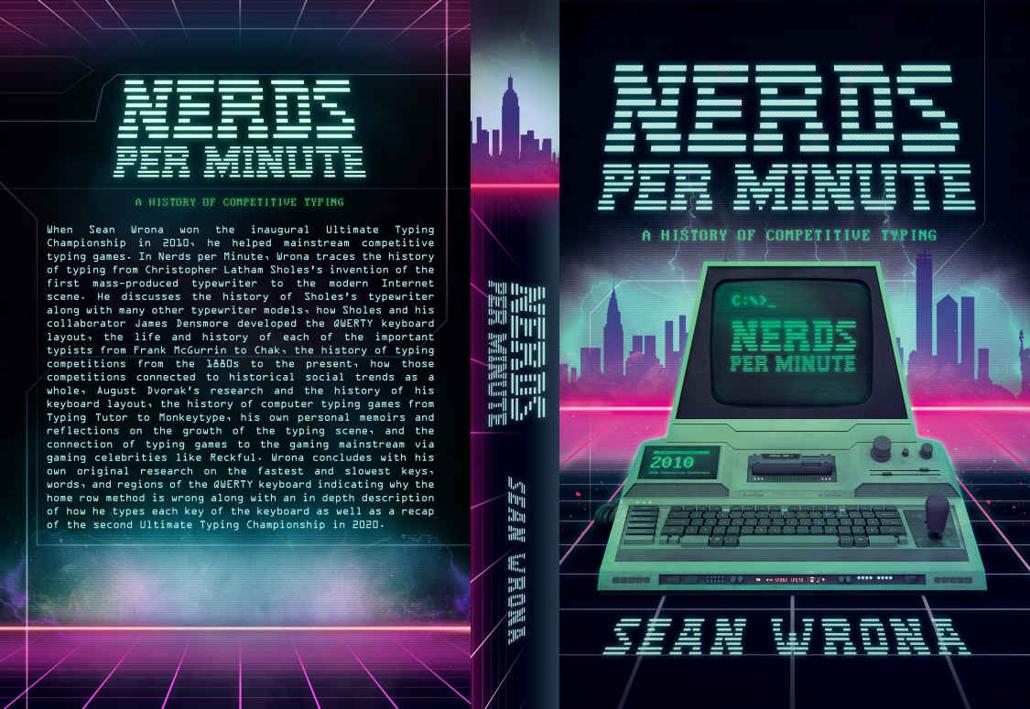
Nerds per Minute: A History of Competitive Typing PDF
933 Pages·2021·0.7924 MB·other
Most books are stored in the elastic cloud where traffic is expensive. For this reason, we have a limit on daily download.
Preview Nerds per Minute: A History of Competitive Typing
Description:
Typing competitions are a forgotten but surprisingly influential aspect of industrial society. Originally introduced in the 1880s to test the durability of various brands of mechanical typewriters, they became a major institution during the first half of the 20th century. The top typists of that era competed at marquee venues like Madison Square Garden and Carnegie Hall, toured the nation like rock stars, made prominent appearances on radio and TV shows, were referenced in newspaper comic strips, gave performances in front of government officials and the United Nations, and even met royalty. The contests were especially noteworthy as they represented one of the first instances of men and women being allowed to compete together on a level playing field in American history - several women won international typing championships before they were even allowed to vote. In addition to playing an unheralded role in women's liberation, the typewriter also helped African-Americans to make inroads into commercial offices thanks to the efforts of Cortez Peters, the first great African-American typist, who successfully integrated typing contests over a decade before Jackie Robinson integrated major league baseball; Peters was also one of the very first African-Americans to establish a chain of business schools in the 1930s. However, because the classic international typewriting championships were never held after 1946, most of the great history of typing competitions has been forgotten by the society at large.
In the 21st century, typing competitions made an unexpected comeback. Shortly after the Internet became mainstream in the late '90s, a wide variety of competitive typing sites were introduced in the 2000s and 2010s such as 10FastFingers, TypeRacer, and Nitro Type, which all attained mass popularity and broke into the gaming mainstream by the late 2010s. Competitive typing became more popular as a participatory pursuit than it had ever been before even as the career prospects for typists plummeted markedly. When Sean Wrona won the inaugural Ultimate Typing Championship in 2010 and much to his horror and chagrin the videos from that contest went semi-viral, he accidentally helped popularize typing competitions to a myriad of millennial and zoomer gamers in the 2010s. In Nerds per Minute, Wrona traces the history of typing from Christopher Latham Sholes's invention of the first mass-produced typewriter to the modern Internet scene. He discusses the history of Sholes's typewriter as well as many other typewriter models that were invented before and after him, how Sholes and his collaborator James Densmore decided upon the QWERTY keyboard layout, the life and history of each of the important typists from Frank McGurrin to Chak, August Dvorak's research and the history of his keyboard layout, the history of European and Japanese typing competitions, how typing competitions connected to historical social trends as a whole, the history of typing games from Typing Tutor, the first mass-produced typing instructional program, to the recent Monkeytype, his own personal memoirs and reflections on the growth of the typing scene, the connection of typing games to the gaming mainstream via gaming celebrities like the late Reckful, along with Wrona's own original research on the fastest and slowest keys, words, and regions of the QWERTY keyboard indicating why the conventional home row wisdom is wrong. He concludes with an in depth description of how he types each key of the keyboard as well as a recap of the second Ultimate Typing Championship in 2020.
In the 21st century, typing competitions made an unexpected comeback. Shortly after the Internet became mainstream in the late '90s, a wide variety of competitive typing sites were introduced in the 2000s and 2010s such as 10FastFingers, TypeRacer, and Nitro Type, which all attained mass popularity and broke into the gaming mainstream by the late 2010s. Competitive typing became more popular as a participatory pursuit than it had ever been before even as the career prospects for typists plummeted markedly. When Sean Wrona won the inaugural Ultimate Typing Championship in 2010 and much to his horror and chagrin the videos from that contest went semi-viral, he accidentally helped popularize typing competitions to a myriad of millennial and zoomer gamers in the 2010s. In Nerds per Minute, Wrona traces the history of typing from Christopher Latham Sholes's invention of the first mass-produced typewriter to the modern Internet scene. He discusses the history of Sholes's typewriter as well as many other typewriter models that were invented before and after him, how Sholes and his collaborator James Densmore decided upon the QWERTY keyboard layout, the life and history of each of the important typists from Frank McGurrin to Chak, August Dvorak's research and the history of his keyboard layout, the history of European and Japanese typing competitions, how typing competitions connected to historical social trends as a whole, the history of typing games from Typing Tutor, the first mass-produced typing instructional program, to the recent Monkeytype, his own personal memoirs and reflections on the growth of the typing scene, the connection of typing games to the gaming mainstream via gaming celebrities like the late Reckful, along with Wrona's own original research on the fastest and slowest keys, words, and regions of the QWERTY keyboard indicating why the conventional home row wisdom is wrong. He concludes with an in depth description of how he types each key of the keyboard as well as a recap of the second Ultimate Typing Championship in 2020.
See more
The list of books you might like
Most books are stored in the elastic cloud where traffic is expensive. For this reason, we have a limit on daily download.
